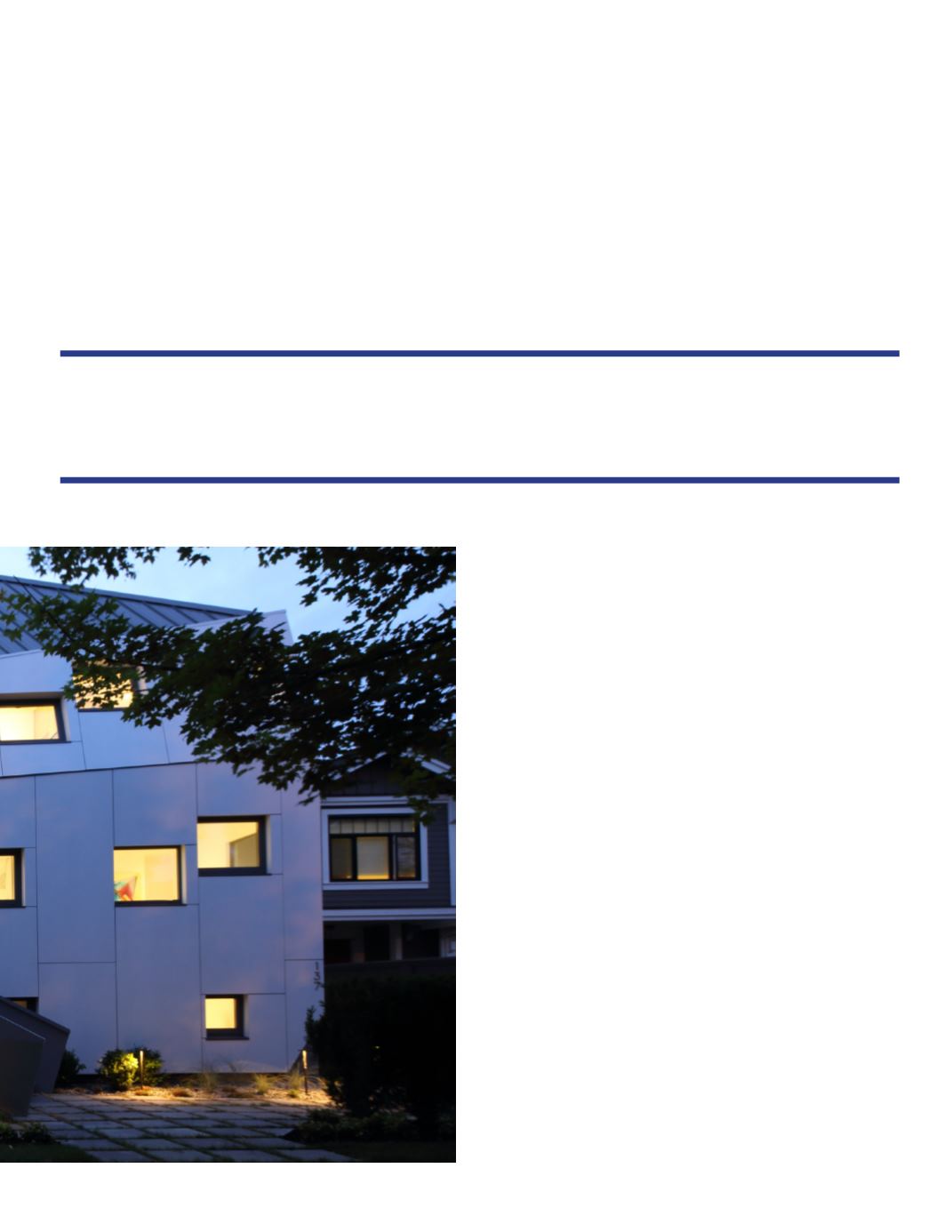
spaces. Vancouver is home to a few simi-
lar models, like the Olympic Village, which
was built up to a height of eight stories
with many functions integrated into the
space. However, the tendency is to fall to-
wards towers or individual homes, Lang
said.
The ROAR_one project is a reference proj-
ect from a sustainability point of view too,
being a model of the Green City concept,
which aims to reduce the carbon footprint
of a building. Passive Haus is a similar con-
cept followed by LWPAC; it refers to a resi-
dential model that reduces energy needs,
such as using solar energy for heating dur-
ing the winter. Lang is a strong advocate
of the Living Building Challenge, which
incorporates all other ecological matters
associated with architecture, from water
usage to the lifecycle of materials used in
buildings.
The Monad project was launched based on
these standards and generated much rec-
ognition and a number of awards due to
its ability to incorporate both sustainabil-
ity and affordability. LWPAC was also one
of the 2016 winners of the Urban Design
Award, presented by the City of Vancou-
ver, for their involvement with the Vanglo
House. Currently working with the Art Gal-
lery of Greater Victoria, the firm will con-
tinue to embed these standards in all of its
projects.
“I think we’re missing a range of models
and technologies that can be used to build
future cities, and we need to aim for that,”
Lang said. By this Lang refers to the incor-
poration of intelligent urban infrastructure,
like bike lanes and public transportation,
“It’s a bigger risk not to change the way how we do things than keep doing
what’s status quo.”
SEPTEMBER 2016
H
business elite canada
7


